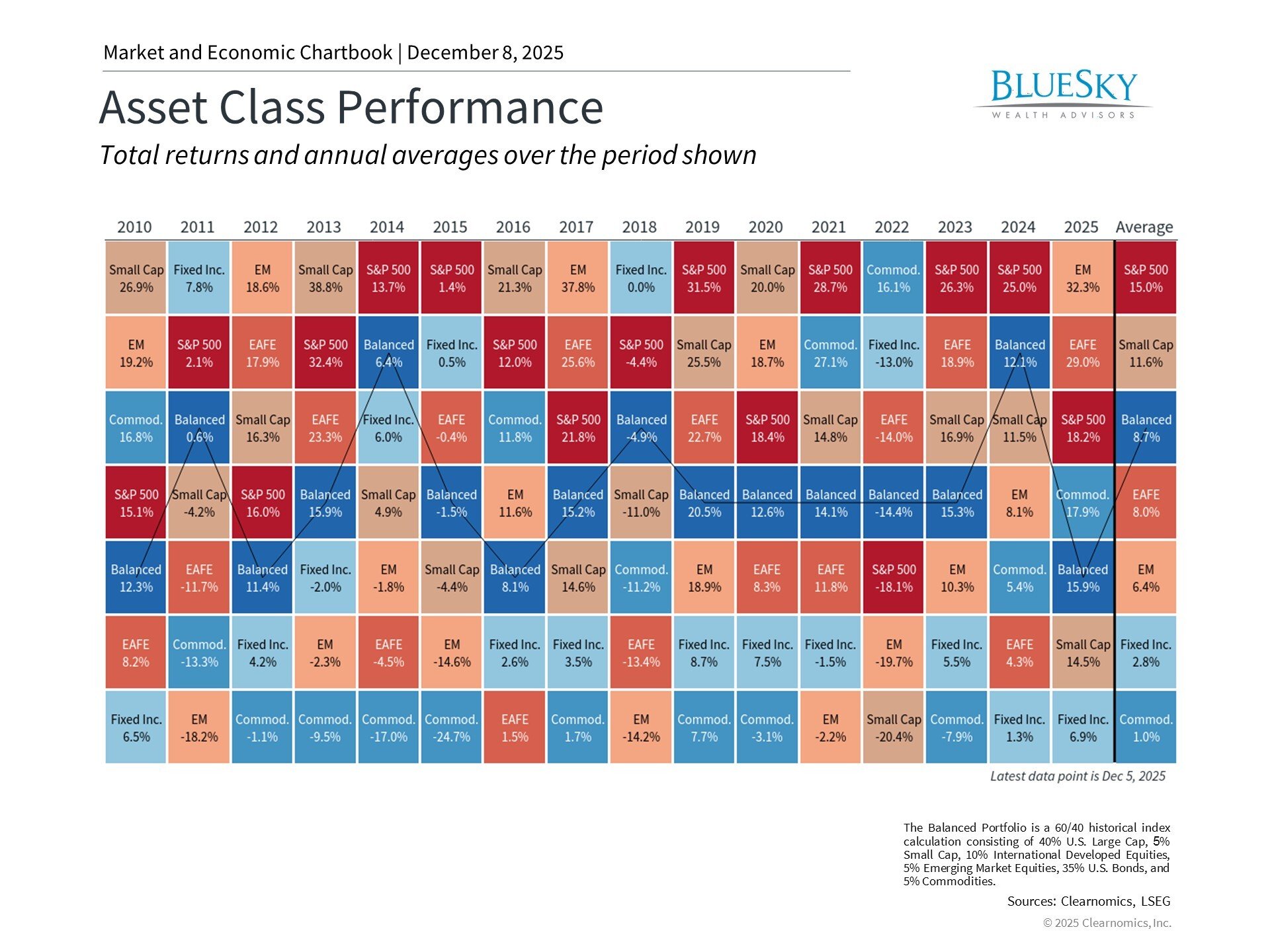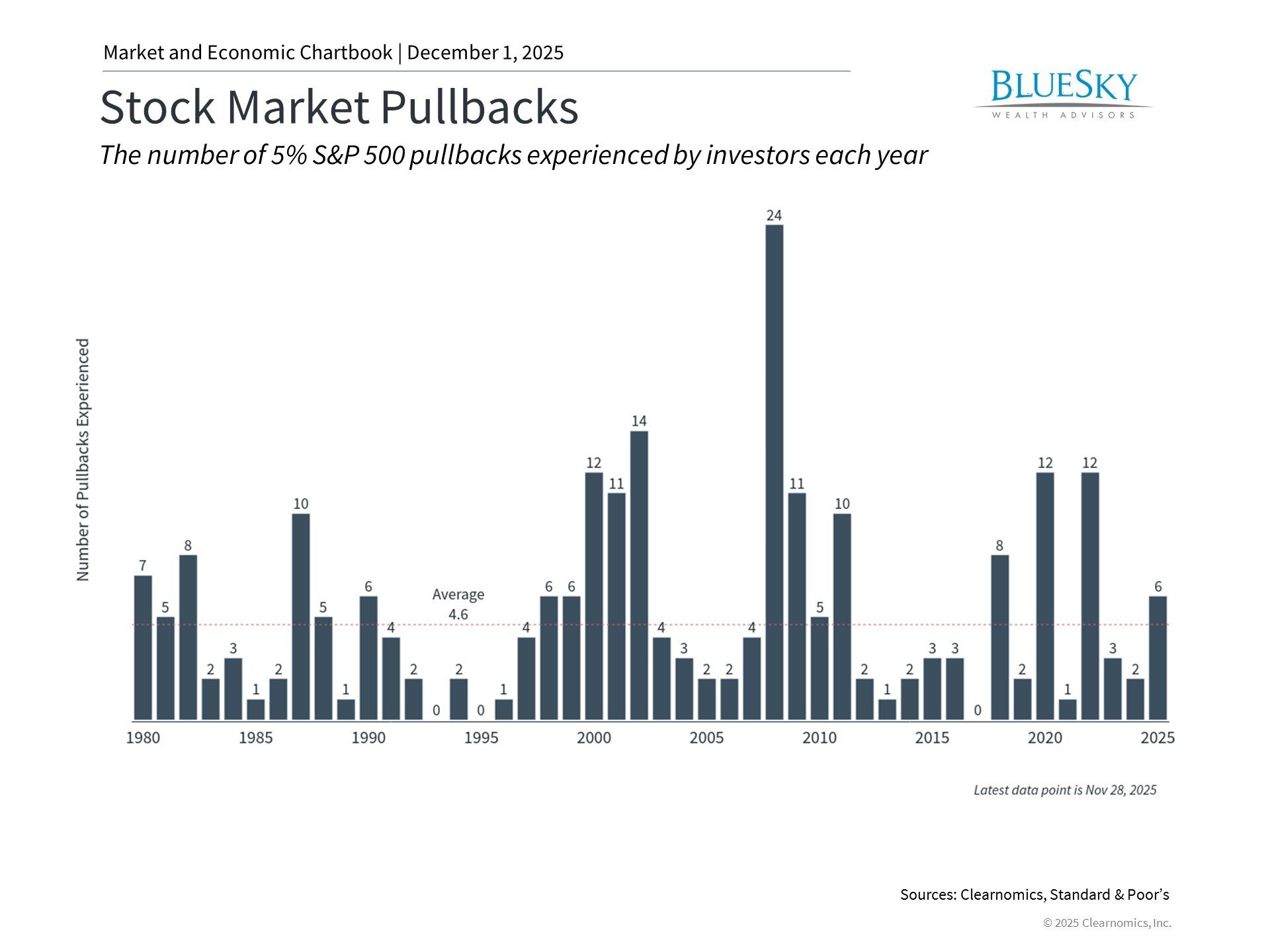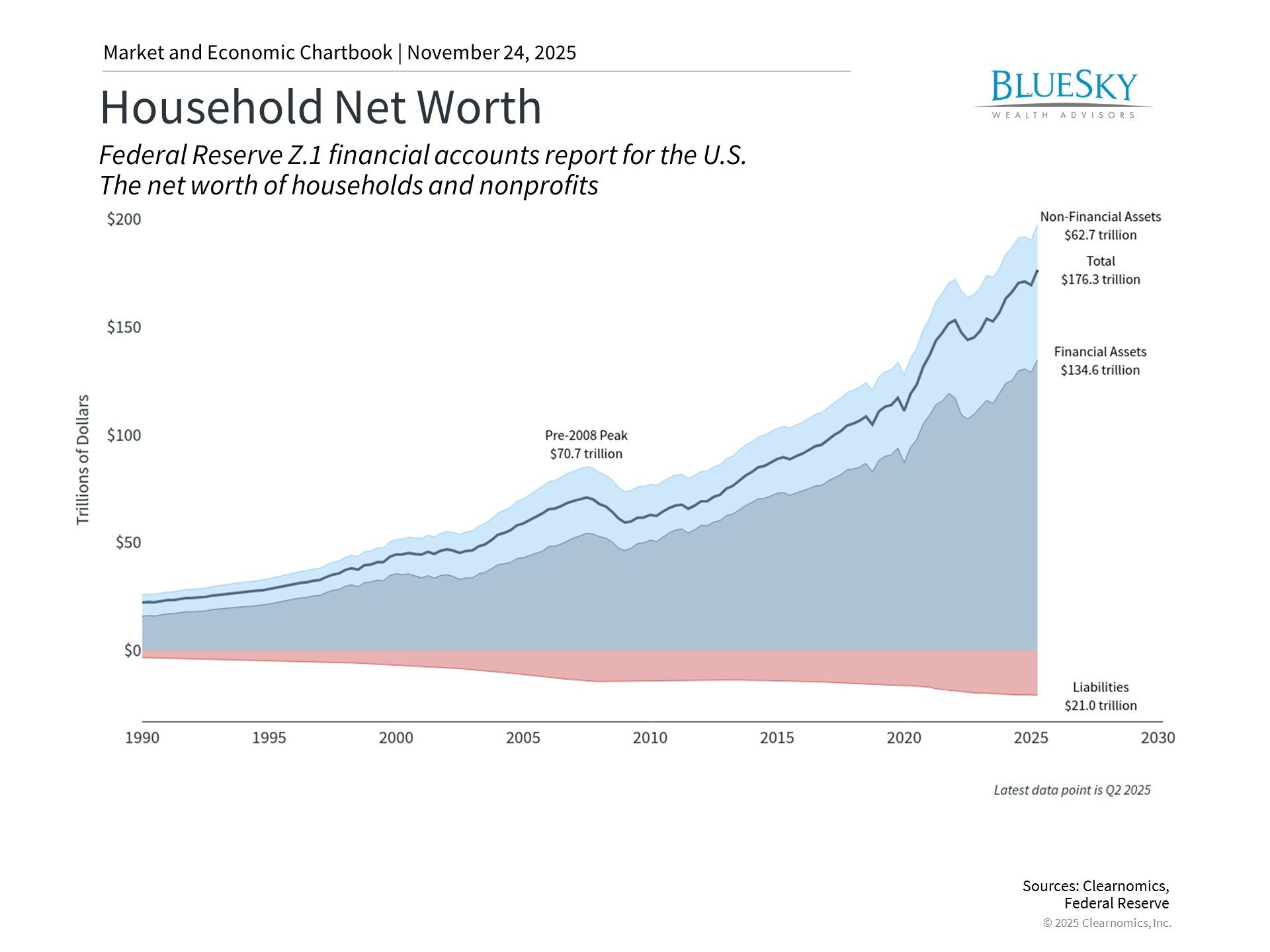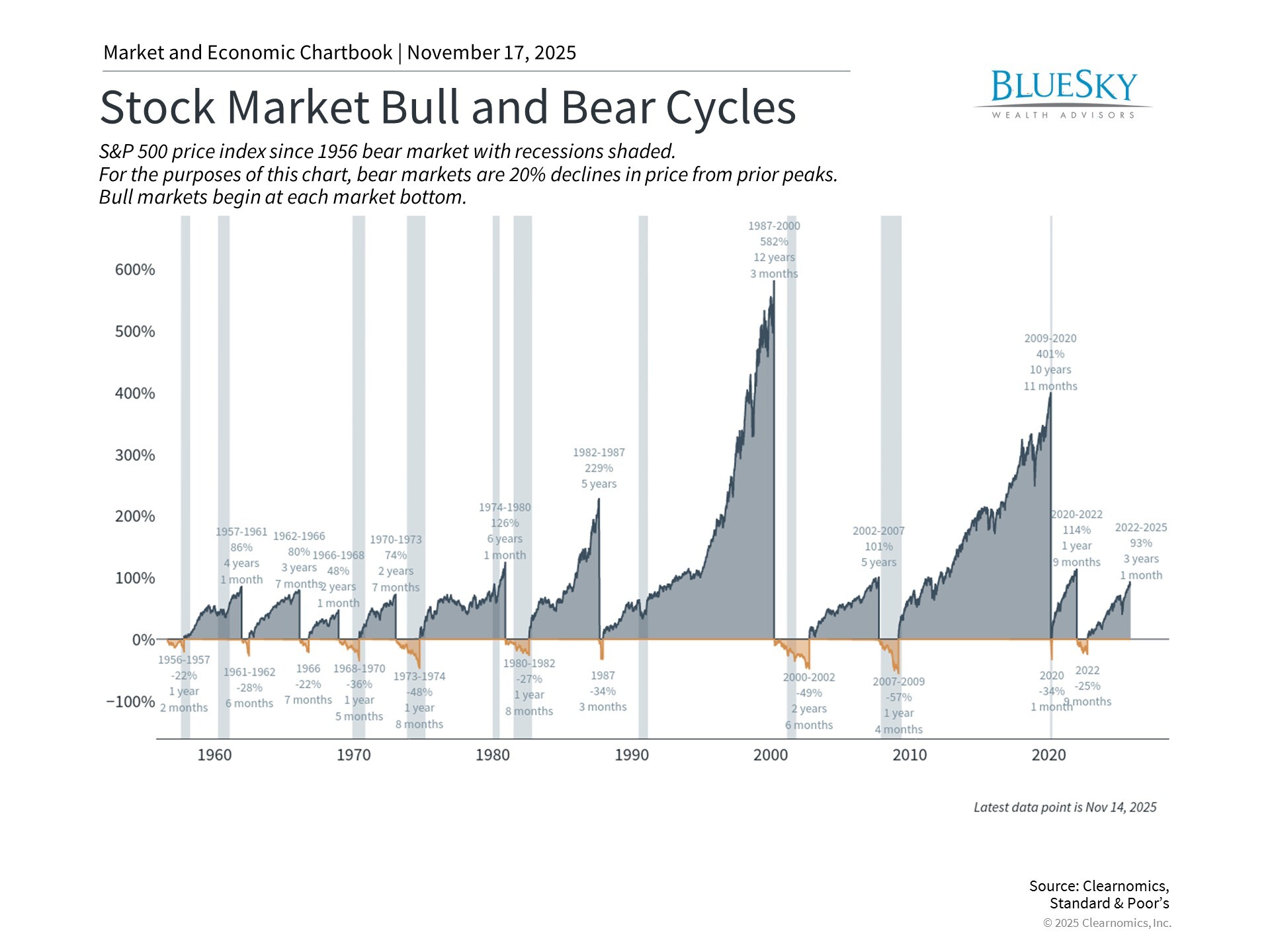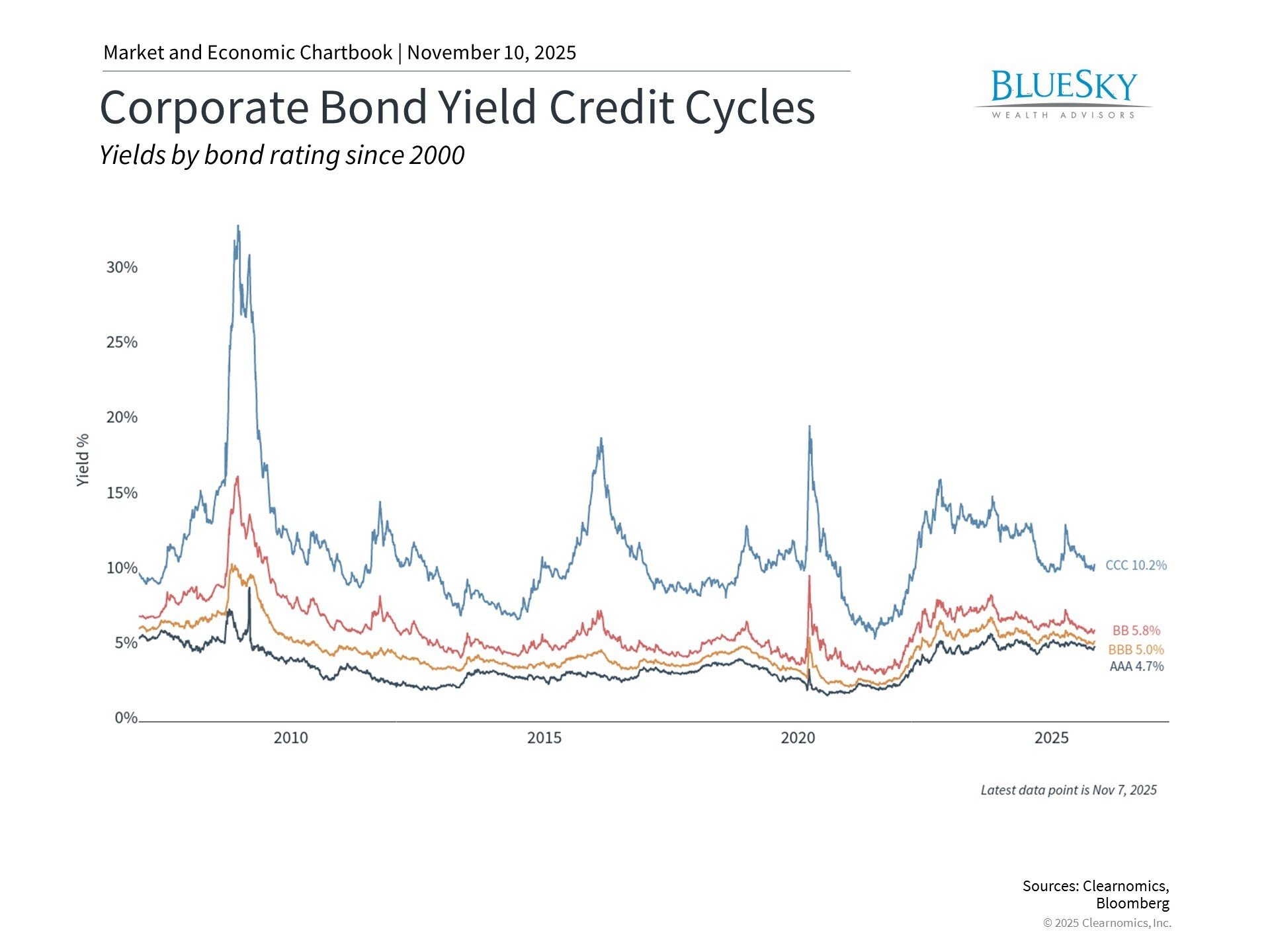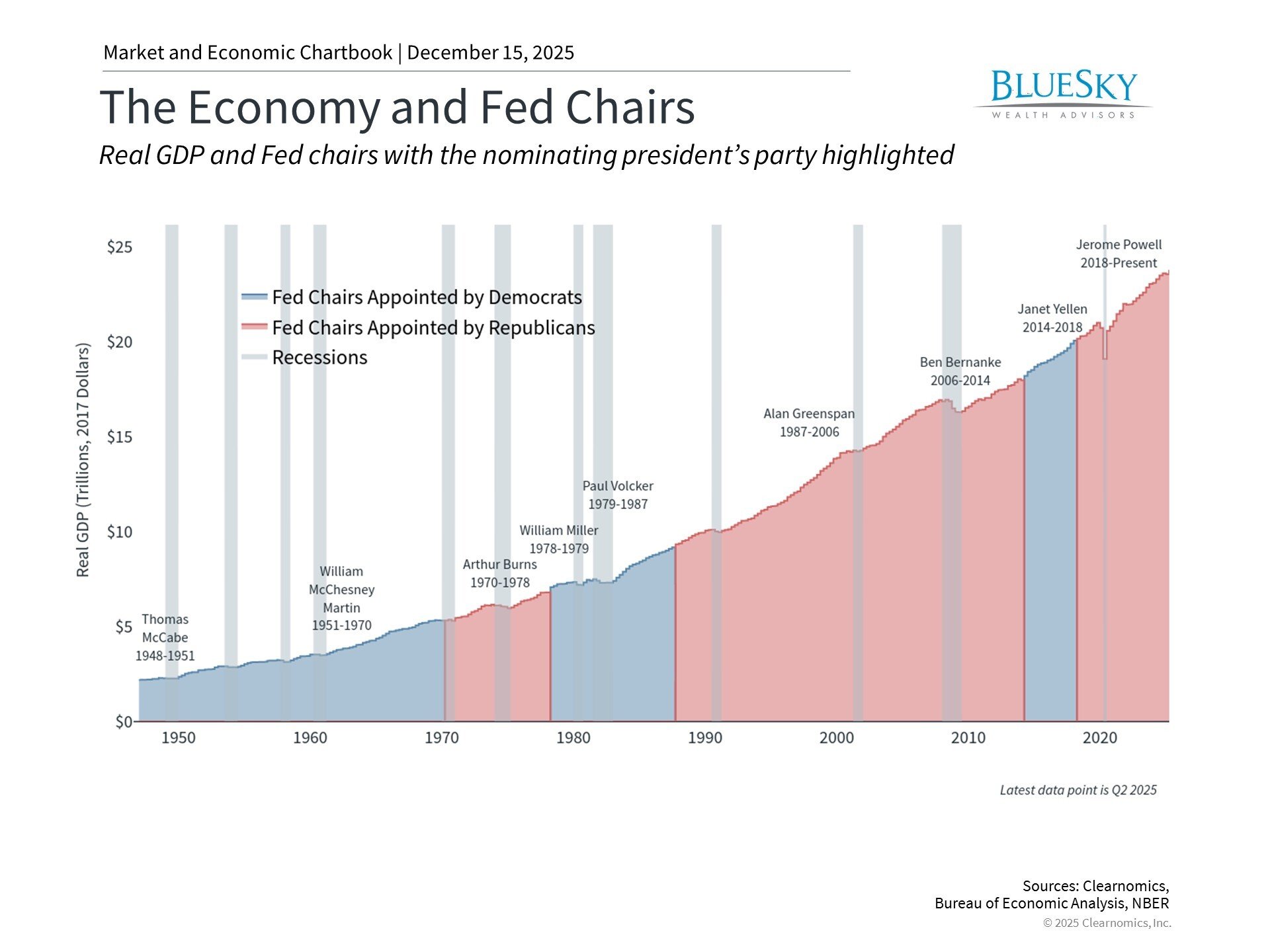
Navigating AI Innovation and Market Concentration in Today's Investment Landscape
Navigating AI Innovation and Market Concentration in Today's Investment Landscape

Today's investors face a compelling question: not whether artificial intelligence will reshape our economy, but how to preserve portfolio equilibrium while markets reach unprecedented peaks. Though the allure of concentrating on recently successful companies is strong, achieving long-term financial objectives demands a balanced approach that weighs both growth potential and risk considerations.
Technology giants capitalizing on AI developments are frequently grouped under the "Magnificent 7" umbrella. This collection—Apple, Microsoft, Nvidia, Amazon, Alphabet, Meta, and Tesla—currently accounts for approximately 35% of S&P 500 market value and includes seven of the eight most valuable corporations. Many earn the "hyperscaler" designation through their substantial computing infrastructure investments designed to support expanding AI application requirements.
During market phases where a limited number of stocks propel overall performance, historical context, present valuations, and strategic asset allocation become increasingly crucial. Examining how comparable concentration periods unfolded previously can guide investors toward more informed long-term financial planning decisions.
Technological advancement propels long-term market growth

While AI and railroad development might appear unrelated, history reveals that revolutionary technologies typically follow comparable trajectories. During the 1860s, railroad securities commanded American markets similarly to how technology shares dominate today. The Pennsylvania Railroad once held the distinction of being the world's largest corporation and, together with other rail companies, comprised a substantial portion of total market capitalization. This naturally generated investor excitement and escalating valuations that contemporary investors would recognize.
This cycle has recurred throughout different eras. The 1990s dot-com surge, when investors concentrated almost entirely on internet enterprises, offers perhaps the most relevant recent illustration. Yet stretching back to the 1800s, telegraph systems, electrical power, and telephone networks revolutionized urban centers while spawning numerous enterprises. Throughout the 1900s, electronics and computing advances transformed every aspect of society and commerce, even preceding internet development.
These technological waves shared common characteristics: initial doubt, swift acceptance, market fervor, and ultimate absorption into the wider economy. Railroad networks didn't vanish but evolved into standard transportation and logistics infrastructure supporting overall economic activity. Although numerous dot-com ventures collapsed during the late 1990s and early 2000s, many others evolved into today's technology frontrunners.
Regarding long-term investment strategy, attention should encompass not merely individual corporations but new technologies' influence on broader markets and economic systems. The genuine impact of innovation lies in enhanced productivity and efficiency across all business sectors. The crucial distinction is that while specific company stock prices may fluctuate rapidly, comprehensive economy-wide effects require considerably more time to materialize.
Historical evidence demonstrates valuation significance alongside growth potential

Currently, the question centers not on AI's eventual importance but whether existing valuations reflect reasonable expectations. With the S&P 500 trading at 22.5x price-to-earnings multiples—approaching the record 24.5x peak—investors are accepting premiums that presume these developments will maintain their current trajectory.
What factors contribute to elevated Magnificent 7 valuations? Initially, recent projections indicate U.S. private AI investment reached $109 billion in 2024, with hundreds of billions more committed this year. This amount surpasses entire national GDPs and significantly exceeds comparable international investments. Recent quarters have witnessed positive investor responses to announcements of increasingly substantial AI infrastructure expenditures. This represents a notable change from less than twelve months ago when investors questioned whether these corporate investments would generate returns.
Additionally, widespread AI tool adoption by businesses and consumers has created escalating computing power demand. This explains why "hyperscalers" such as Microsoft and NVIDIA have experienced soaring market capitalizations, with both reaching valuations exceeding $4 trillion. This also accounts for why new data center requirements and their power consumption remain investor priorities.
These corporations are perceived as constructing infrastructure enabling other businesses to embrace AI technologies, similar to how railroad companies built transportation networks supporting all 19th-century enterprises. While this generates substantial long-term value, return realization timelines remain unpredictable.
The difficulty lies in markets frequently overestimating the pace at which transformative technologies will produce profits, even when long-term potential appears genuine. The 1990s provide a relevant cautionary example. During that period, some investors believed conventional valuation measures no longer applied to internet companies. When reality failed to meet expectations, the Nasdaq declined 78% from its peak, resulting in numerous company failures or acquisitions. Nevertheless, the internet did transform the economy, just not within the timeframe or manner that peak valuations suggested.
Managing opportunities while addressing concentration risk

Likewise, while the Magnificent 7 companies may have spearheaded market advances, they have similarly led declines. During 2022, when interest rates increased rapidly due to inflation, these securities fell approximately 50% on average.
Given that the Magnificent 7 now constitutes such a significant portion of major market indices, virtually all investors hold these stocks within their portfolios. Those who have emphasized technology securities may discover their portfolio allocations exceed intended levels.
Maintaining excessive portfolio concentration in limited investments is commonly termed "concentration risk" and represents the antithesis of diversification. While these companies have demonstrated growth and profitability, having substantial portfolio portions dependent on a small company group—regardless of their success—can generate volatility as trends shift. Even exceptional companies can experience underperformance periods.
For context, consider the equal-weighted S&P 500 illustrated in the accompanying chart, which assigns identical importance to each company irrespective of size. This methodology has historically delivered different return patterns compared to standard market-capitalization weighted indices, sometimes outperforming when large companies face difficulties.
Since mega-cap technology companies have recently performed well, some investors may find it unexpected that an equal-weighted index has still delivered superior performance over the past 30 years. This underscores the importance of looking beyond recent market drivers and current headlines.
This doesn't suggest investors should completely avoid technology stocks. Instead, it emphasizes maintaining balance and appropriate asset allocation importance.
The bottom line? Current AI developments present both opportunities and risks for investors. Financial success stems not from selecting winning stocks but from maintaining proper portfolio balance aligned with long-term objectives.
BlueSky Disclosures
Copyright (c) 2025 Clearnomics, Inc. All rights reserved. The information contained herein has been obtained from sources believed to be reliable, but is not necessarily complete and its accuracy cannot be guaranteed. No representation or warranty, express or implied, is made as to the fairness, accuracy, completeness, or correctness of the information and opinions contained herein. The views and the other information provided are subject to change without notice. All reports posted on or via www.clearnomics.com or any affiliated websites, applications, or services are issued without regard to the specific investment objectives, financial situation, or particular needs of any specific recipient and are not to be construed as a solicitation or an offer to buy or sell any securities or related financial instruments. Past performance is not necessarily a guide to future results. Company fundamentals and earnings may be mentioned occasionally, but should not be construed as a recommendation to buy, sell, or hold the company's stock. Predictions, forecasts, and estimates for any and all markets should not be construed as recommendations to buy, sell, or hold any security--including mutual funds, futures contracts, and exchange traded funds, or any similar instruments. The text, images, and other materials contained or displayed in this report are proprietary to Clearnomics, Inc. and constitute valuable intellectual property. All unauthorized reproduction or other use of material from Clearnomics, Inc. shall be deemed willful infringement(s) of this copyright and other proprietary and intellectual property rights, including but not limited to, rights of privacy. Clearnomics, Inc. expressly reserves all rights in connection with its intellectual property, including without limitation the right to block the transfer of its products and services and/or to track usage thereof, through electronic tracking technology, and all other lawful means, now known or hereafter devised. Clearnomics, Inc. reserves the right, without further notice, to pursue to the fullest extent allowed by the law any and all criminal and civil remedies for the violation of its rights.

